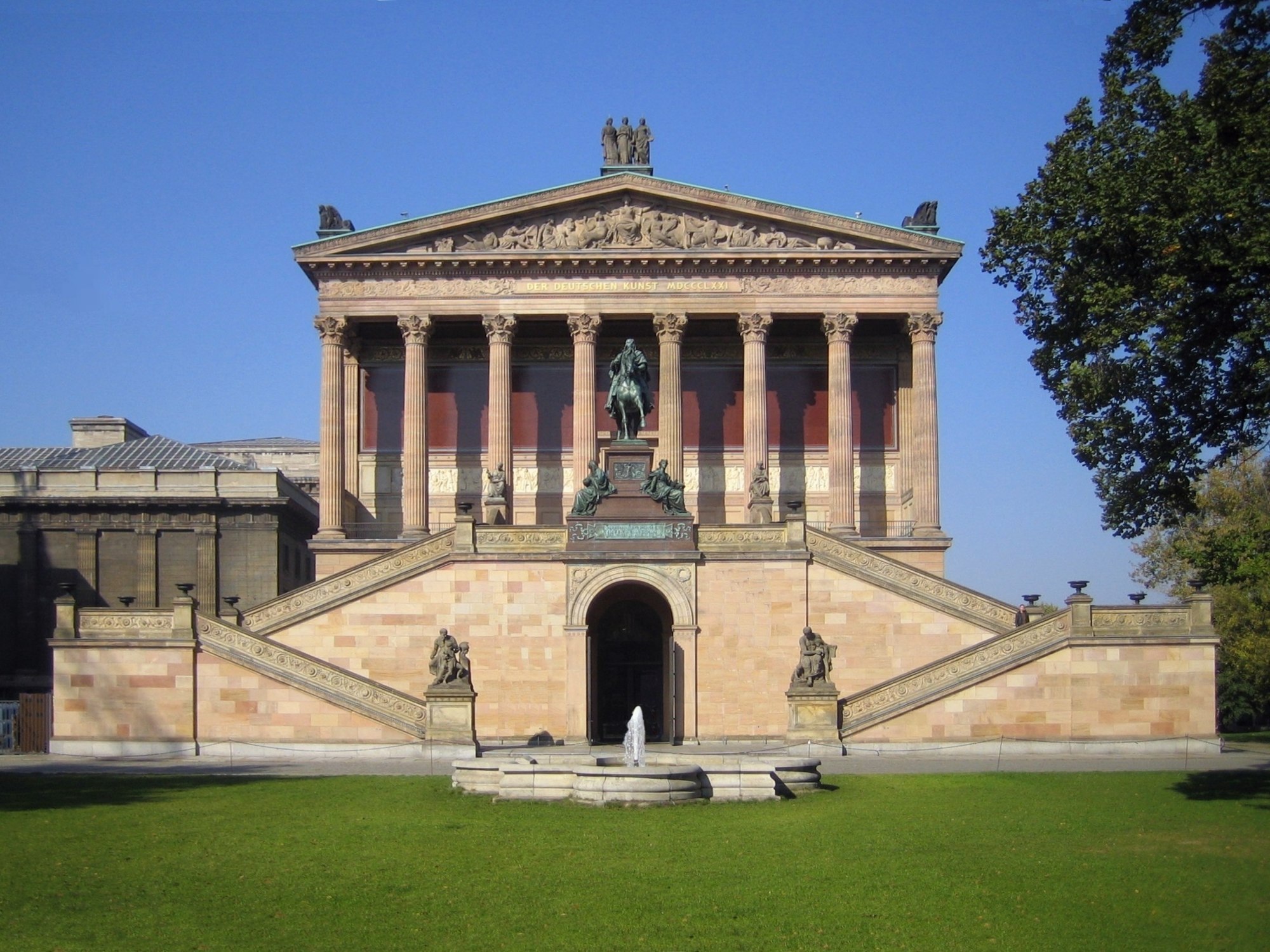More about Alte Nationalgalerie

Contributor
It took over 50 years between conception and beginning to construct the building that would be the Old National Gallery.
If my dad were writing this, he’d make a joke about how it’s called the Old National Gallery because by the time they finished building it, the museum was already a senior citizen. So it was conceptualized in 1815, became a popular idea fifteen years later, ten years after that an actual plan was put together (it never amounted to anything), twenty years after that the museum was founded, three years after that people started to design it, and four years and three plans later, ground was broken. All and all a slick and quick process.
Though the museum looks like an old Roman building, the construction materials were relatively modern. Brick and iron were used for the exterior so it was thought to be a fireproof building, but that was never tested.
In the early 1900s a new curator added expressionist paintings to the museum, but after the German Revolution he decided that modern art won’t do in the ~Old~ National Gallery so it was moved into what would later be called National Gallery II.
During WWII the building closed and was heavily damaged in air raids. The museum was partially reopened during repairs and eventually got completely remodeled. Not so Old anymore, eh?
Featured Content
Here is what Wikipedia says about Alte Nationalgalerie
The Alte Nationalgalerie (lit. Old National Gallery) is a listed building on the Museum Island in the historic centre of Berlin, Germany. The gallery was built from 1862 to 1876 by the order of King Frederick William IV of Prussia according to plans by Friedrich August Stüler and Johann Heinrich Strack in Neoclassical and Renaissance Revival styles. The building's outside stair features a memorial to Frederick William IV. Currently, the Alte Nationalgalerie is home to paintings and sculptures of the 19th century and hosts a variety of tourist buses daily. As part of the Museum Island complex, the gallery was inscribed on the UNESCO World Heritage List in 1999 for its outstanding architecture and its testimony to the development of museums and galleries as a cultural phenomenon in the late 19th century.
Check out the full Wikipedia article about Alte Nationalgalerie

















